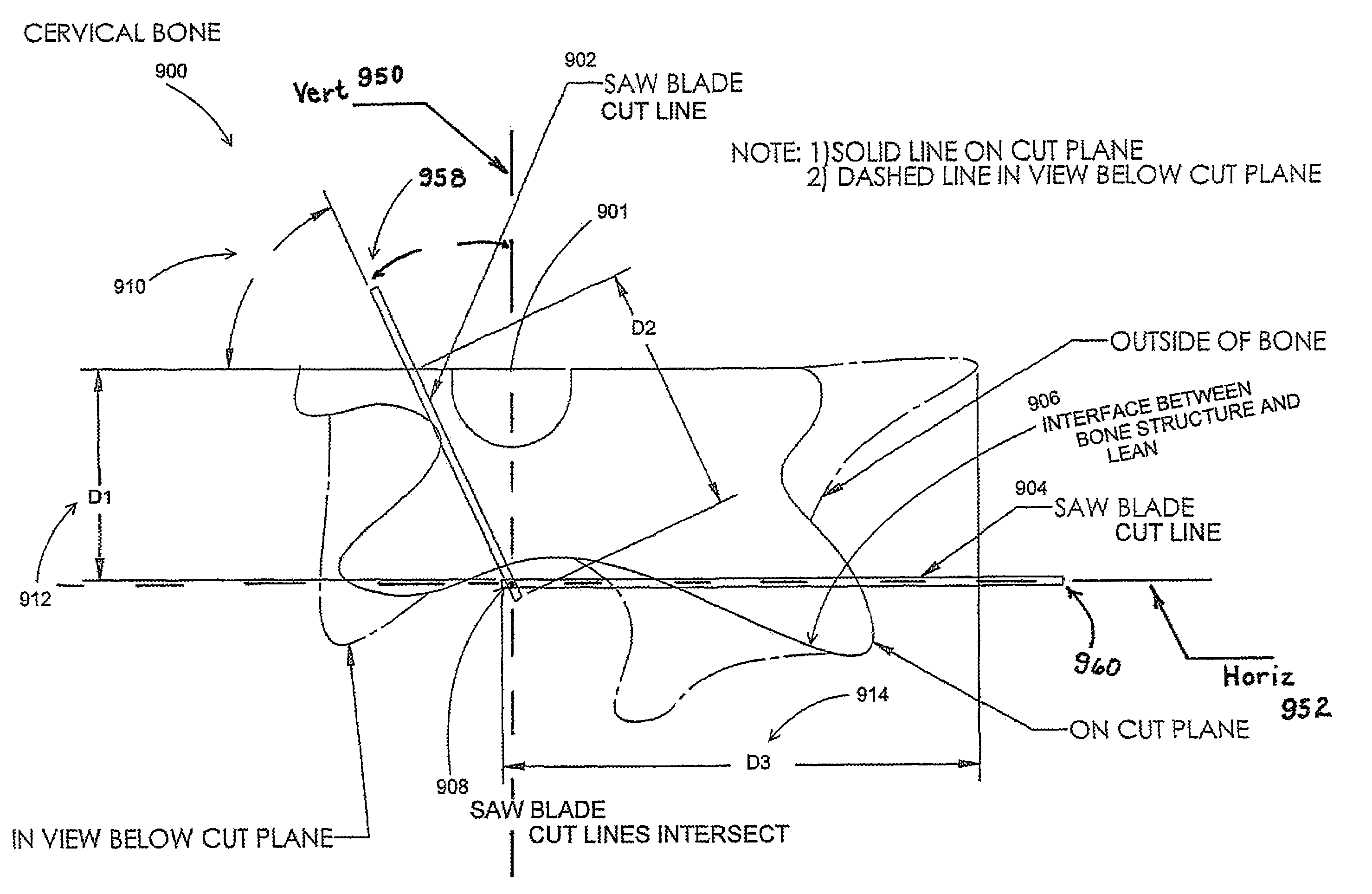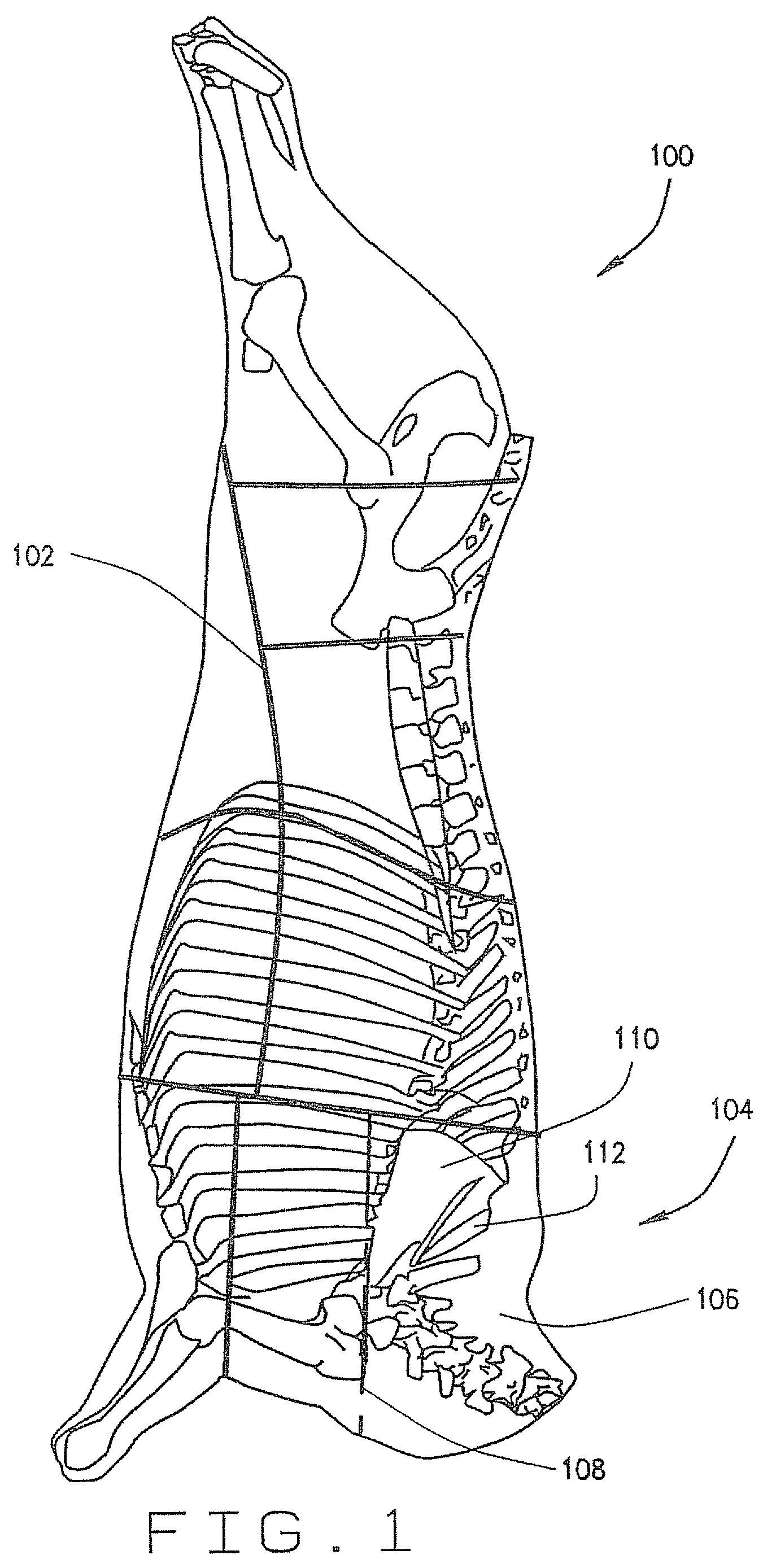Method and apparatus to load and remove bones from primals
a technology of bone removal and primal meat, which is applied in the field of processing primal and can solve the problems of difficult manual manipulation of meat portions, difficult to remove bones from subprimal cuts of meat, and difficult to remove bones from subprimal cuts
- Summary
- Abstract
- Description
- Claims
- Application Information
AI Technical Summary
Benefits of technology
Problems solved by technology
Method used
Image
Examples
Embodiment Construction
[0038]According to the embodiment(s) of the present invention, various views are illustrated in FIG. 1-6 and like reference numerals are being used consistently throughout to refer to like and corresponding parts of the invention for all of the various views and figures of the drawing. Also, please note that the first digit(s) of the reference number for a given item or part of the invention should correspond to the Fig. number in which the item or part is first identified.
[0039]One embodiment of the present invention comprising a conveyance and cutting means teaches a novel apparatus and method for removing a bone structure from a sub-primal or primal meat cut.
[0040]The details of the invention and various embodiments can be better understood by referring to the figures of the drawing. Referring to FIG. 1, a side view of a beef carcass skeletal structure 100 is shown that reveals the primal meat cuts or primal meat cut portions of the beef carcass. A bold line 102 is shown that div...
PUM
 Login to View More
Login to View More Abstract
Description
Claims
Application Information
 Login to View More
Login to View More - R&D
- Intellectual Property
- Life Sciences
- Materials
- Tech Scout
- Unparalleled Data Quality
- Higher Quality Content
- 60% Fewer Hallucinations
Browse by: Latest US Patents, China's latest patents, Technical Efficacy Thesaurus, Application Domain, Technology Topic, Popular Technical Reports.
© 2025 PatSnap. All rights reserved.Legal|Privacy policy|Modern Slavery Act Transparency Statement|Sitemap|About US| Contact US: help@patsnap.com



